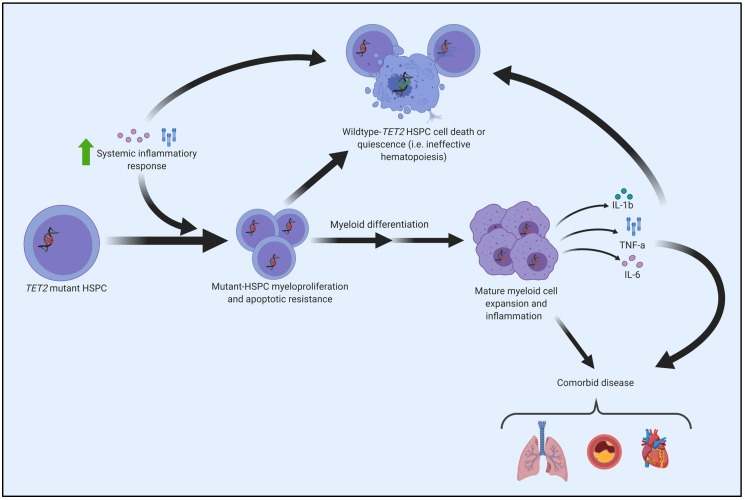Figure 4.
Molecular pathogenesis of TET2-mutated HSPC. Exposure to upregulated inflammatory cytokines (due to systemic inflammation or local alterations) advantages TET2-mutant HSPCs, fostering a phenotype characterized by increased proliferation and a resistance to apoptosis [69,70,71]. TET2-mutant HSPCs and the abnormal immune microenvironment of the bone marrow can cause premature death or quiescence of wildtype (i.e., normal) HSPCs, consequently manifesting as ineffective and clonal hematopoiesis. The increased proliferation associated with TET2-mutant HSPCs leads to the expansion of TET2-clonal populations in the bone marrow and/or peripheral blood. Mature myeloid cells (e.g., macrophages) derived from TET2-mutant HSPCs demonstrate a hyper-inflammatory phenotype that contributes to the pathogenesis of comorbidities, with a notable causal role in cardiovascular disease [57,61,67].

